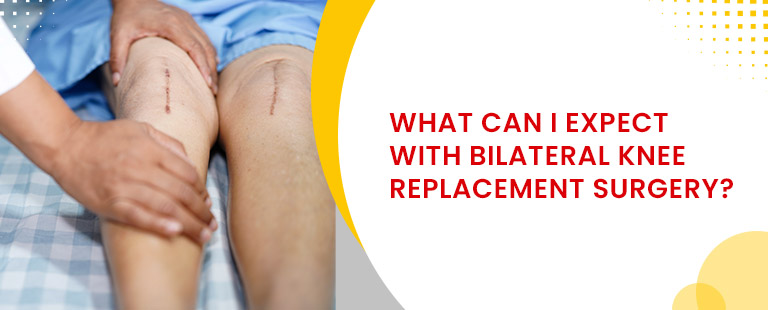Recognizing the significance of physical therapy in hip replacement recovery is vital for achieving optimal outcomes and restoring function. This article offers an introduction to the role of physical therapy in the recovery process, highlighting its benefits in helping patients regain strength, mobility, and independence after hip replacement surgery.
8 Key Components of Physical Therapy in Hip Replacement Recovery
Physical therapy is an essential component of the rehabilitation program designed to help patients regain strength, mobility, and function.
Here’s how physical therapy contributes to the recovery process:
1. Managing Pain And Discomfort
Physical therapists employ various techniques to help manage post-operative pain and discomfort. These may include:
- Manual therapy techniques such as gentle joint mobilisations and soft tissue massage
- Modalities like heat or cold therapy
2. Regaining Mobility And Range Of Motion
One of the primary goals of physical therapy is to restore joint range of motion and flexibility in the hip. Physical therapists guide patients through specific exercises and stretches that are designed to gradually increase mobility in the hip joint.
These exercises target:
- Hip Flexors
- Extensors
- Abductors
- Adductors
- Rotator Muscles
3. Strengthening Muscles For Improved Joint Support
Following hip replacement surgery, the muscles surrounding the hip joint may have become weakened due to the surgery itself or pre-existing conditions.
Physical therapy includes targeted exercises to strengthen these muscles, such as:
- Glutes
- Quadriceps
- Hamstrings
- Core Muscles
Strengthening these muscles helps improve:
- Joint stability
- Overall function
- And, supports the new hip joint
4. Gait Training (Training For Proper Walking Patterns)
Physical therapists assist patients in relearning proper walking techniques and regaining their balance and coordination. They may initially use assistive devices such as crutches or walkers to provide support while gradually transitioning to walking without assistance. Gait training focuses on achieving a normal, pain-free walking pattern and ensuring proper weight distribution.
5. Enhancing Balance And Coordination Abilities
Hip replacement surgery can temporarily affect balance and coordination. Physical therapists incorporate exercises and activities to enhance balance, stability, and coordination. These exercises may include:
- Single-Leg Stance Exercises
- Balance Boards
- Proprioceptive training
6. Developing Functional Abilities For Everyday Tasks
Physical therapy aims to improve patient’s ability to perform everyday activities safely and efficiently. Therapists focus on training patients in tasks such as:
- Sitting
- Standing
- Getting in and out of bed
- Stair climbing
This functional training helps patients regain independence and confidence in their daily activities.
7. Providing Education And Guidance For Optimal Recovery
Physical therapists provide education on proper body mechanics, posture, and home exercises to optimize recovery and prevent future hip problems. They teach patients how to protect their new hip joints during activities, avoid excessive stress, and promote optimal healing.
8. Tailoring Care To Individual Needs
Each patient’s physical therapy program is tailored to their specific needs, goals, and unique circumstances. Physical therapists work closely with patients to monitor their progress and adjust the treatment plan accordingly. They ensure that the exercises and activities are appropriate for the patient’s age, overall health, and the surgical technique used.
By participating in a comprehensive physical therapy program, patients can achieve optimal recovery after hip replacement surgery. The guidance and expertise of a skilled physical therapist help maximize outcomes, improve functional abilities, and promote a smooth transition back to normal activities.
Conclusion
In conclusion, physical therapy plays a crucial role in the recovery journey following hip replacement surgery. By actively participating in physical therapy, patients can improve their quality of life, regain independence in daily activities, and confidently resume their normal routines. The expertise and personalized care provided by physical therapists contribute significantly to the overall success of hip replacement recovery.
Frequently Asked Questions
Most frequent questions and answers
Q1. What happens if you don’t take physical therapy after hip replacement?
If you don’t take physical therapy after hip replacement:
- It may result in a limited range of motion and mobility in the hip joint.
- Muscle weakness and atrophy may occur, affecting overall strength and stability.
- Recovery may be slower, and it may take longer to regain functional abilities.
- Pain and discomfort may persist due to a lack of proper rehabilitation.
Q2. When to start physical therapy after hip replacement?
Physical therapy after hip replacement usually starts within 24 to 48 hours after surgery, while still in the hospital or rehabilitation center. The exact timing may vary based on the surgeon’s recommendation and the patient’s overall health.
Q3. How long should I do physical therapy after hip replacement?
Physical therapy after hip replacement typically lasts for several weeks to a few months. The exact duration depends on various factors, including individual progress, specific goals, and the surgeon’s guidance. Most programs range from 6 to 12 weeks, but they can be longer for complex cases or patients with additional health considerations.




